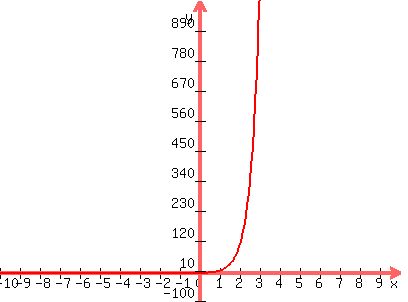Question 173904: My question is did I do this one correctly? if so..i am having trouble graphing this..can someone help me?
Evaluate the functions for the values of x given as 1, 2, 4, 8, and 16. Describe the differences in the rate at which each function changes with increasing values of x.
4. f(x) = 10x
f(1)= 10^1= 10
f(2)= 10^2 = 100
f(4)= 10^4 = 10000
f(8) = 10^8 = 100000000
f(16) = 10^16 = 10000000000000000
Found 2 solutions by stanbon, josmiceli:
Answer by stanbon(75887)   (Show Source): (Show Source):
You can put this solution on YOUR website! i am having trouble graphing this..can someone help me?
Evaluate the functions for the values of x given as 1, 2, 4, 8, and 16. Describe the differences in the rate at which each function changes with increasing values of x.
4. f(x) = 10^x
f(1)= 10^1= 10
f(2)= 10^2 = 100
f(4)= 10^4 = 10000
f(8) = 10^8 = 100000000
f(16) = 10^16 = 10000000000000000
---------------------

=========================
Cheers,
Stan H.
Answer by josmiceli(19441)   (Show Source): (Show Source):
You can put this solution on YOUR website! The x-axis can be your values for  and the y-axis and the y-axis
could be  for each uniform division. A better way for each uniform division. A better way
is to use what is called a log-log graph. It's intended for
plotting logarithmic progression on both axes. If that's
beyond the scope of your class, just forget it.
|
|
|